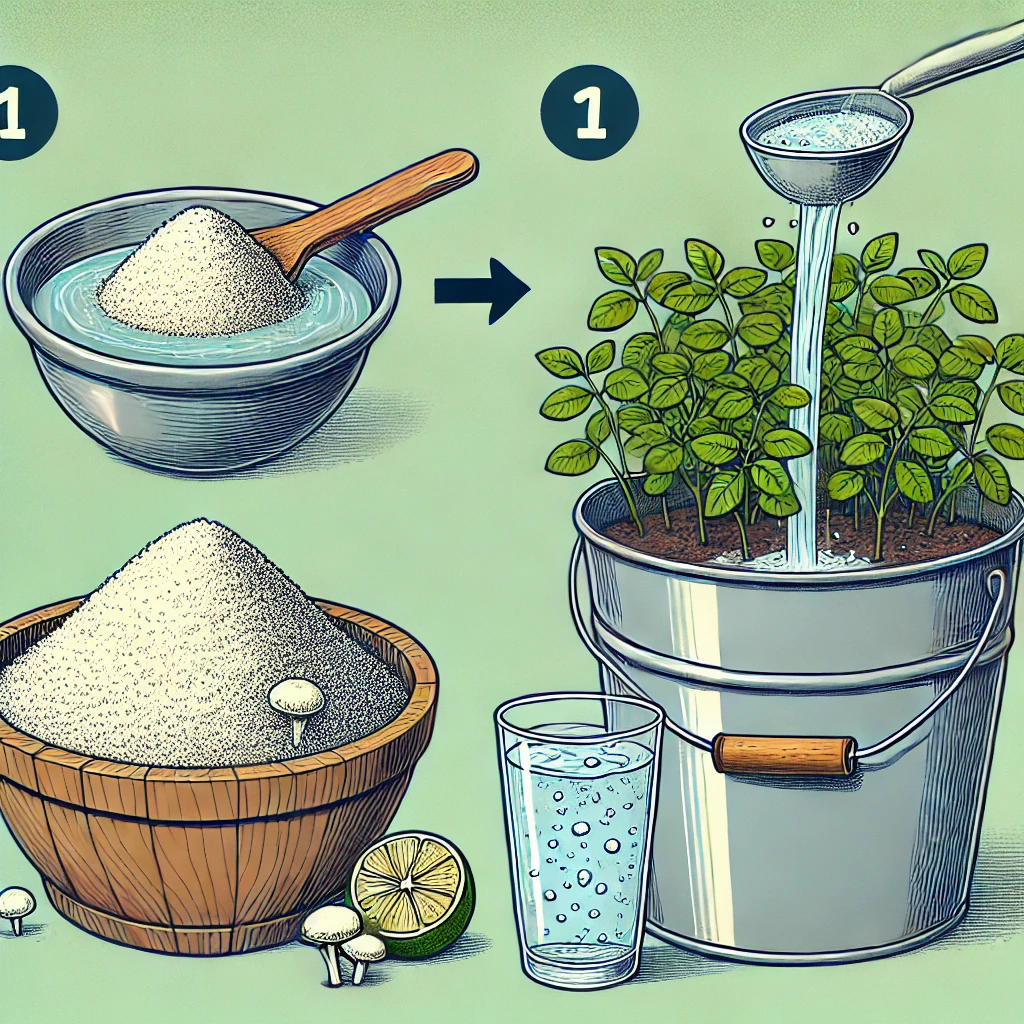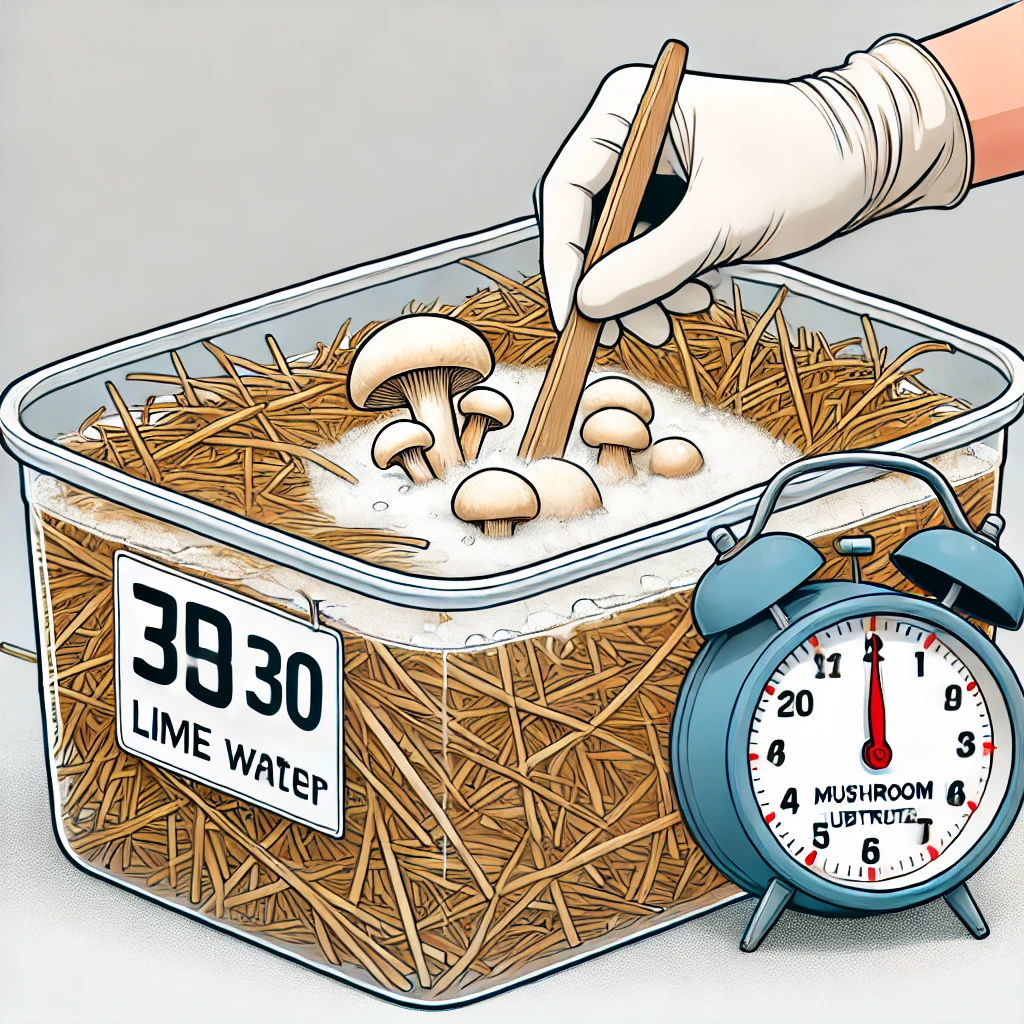Preparing the Lime Water Solution
Initial Steps:

- Mix 200 grams of lime powder with 30 liters of water to create a lime water solution.
Substrate Preparation and Incubation
Preparing the Growing Medium:

- Soak straw or hay in the lime water solution for about 30 minutes.
- Drain the substrate thoroughly after soaking.
Incubation Process:
- Cover the drained substrate with plastic and maintain a temperature of 65-70°C for around 4 days to promote incubation.
Mushroom Cultivation Phase

Transitioning to Cultivation:
- Once incubation is complete, proceed to the cultivation phase.
Using Plastic Bags:
- Opt for polyethylene (PE) bags with dimensions of approximately 30 x 40 cm and a folded square bottom for easy layering.
Layering the Substrate:
- Begin with a bottom layer of 3-4 cm of substrate.
- Add mushroom spawn along the inner walls of the bag.
- Alternate with layers of 6-7 cm of substrate, ensuring the top layer is evenly sprinkled with spawn. Repeat until you have four layers.
Sealing and Transferring:
- Seal the bags with clean cotton and secure the opening tightly.
- Move the sealed bags to a fiber nursery, spacing them apart. Cover the bag openings with newspaper to retain moisture.
Mushroom Growth and Harvesting

Managing the Environment:
- Keep the growing area closed to maintain consistent warmth and humidity, essential for mushroom development.
Monitoring and Preparing for Growth:
- Observe the bags until the mycelium fully covers them, appearing as a uniform white layer.
- Make staggered cuts in the bags and hang them to allow mushroom sprouting.
Watering and Harvesting:
- Spray water on the bags 2-3 times daily to maintain even moisture.
- Harvest mushrooms by gently twisting them counterclockwise.
- Pause watering temporarily after harvesting to encourage the next round of growth.
Sustained Harvesting:
- Repeat the process for subsequent generations, which often yield more abundant crops.

Adaptability of the Method
This simple yet effective technique enables daily mushroom harvests and can be tailored to various needs using readily available materials. Consistent environmental conditions and careful monitoring are key to ensuring success.
